|
|
|
|||||||||
|
The fourth in Royal Mail's new nature series, 'Action for Species' concentrates on mammals. The series examines UK species that are endangered, but thanks to the efforts of conservation groups and the public, we have become increasingly aware of the threats to our mammal populations, and many now benefit from legal protection and active conservation measures, and are showing encouraging signs of recovery.
The issue comprises of ten 1st class stamps in a se-tenant block featuring UK insect species that are endangered. The British Isles is home to more than 60 species of mammals, but almost half of these have been introduced from elsewhere in the world and they include some of the most abundant, like the rabbit and grey squirrel.
All ten mammals are the subject of conservation programmes due to the effect of adverse changes in their environment caused by pollution, the growth in roads and housing developments, and in some cases the introduction of non-native species, which have all contributed to a fall in numbers. Each stamp features a photograph of the insect together with its common and scientific name.
All images are copyright Royal
Mail.
Wildlife Trusts and others wishing to use images on websites or in
magazines should contact Royal
Mail's
Intellectual Property Department.
|
|
|
|||||||||
|
Humpback Whale Megaptera
novaeangliae
(Average weight: 45 tonnes,
total length: 1315m)
This big, black whale with white
under its tail has knobbly flippers that are longer than those of any
other whale. Seen mainly in summer to the west of Britain, it arches
its back to dive and feeds by sieving small fish from the water using a
complex array of frilly plates found in its upper jaw instead of teeth.
Technical details: The 35mm square stamps are designed by Jason Godfrey. Photographic credits: humpback whale © Brandon Cole/Nature Picture Library; wildcat © Peter Cairns/Nature Picture Library; brown long-eared bat © Les Stocker/Photolibrary Group Ltd; polecat © Paul Hobson/Royal Mail; sperm whale © Thomas Haider/Photolibrary Group Ltd; water vole © Terry Whittaker; greater horseshoe bat © Biosphoto/Frank & Philippe/Still Pictures; otter © Paul Hobson; dormouse © Stephen Dalton/NHPA/Photoshot; hedgehog © Laurie Campbell/Royal Mail
In sheets of 30/60 they are printed in lithography by Cartor Security Printing, perf 14½.
The stamp and postmark images are Copyright 2010 by Royal Mail.
Retail booklet - 15 June
A retail booklet of 6 self-adhesive stamps, being 4 x 1st class gold
Machin definitives and Otter and Hedgehog mammals stamps - for first
day postmarks see the retail
booklets page.
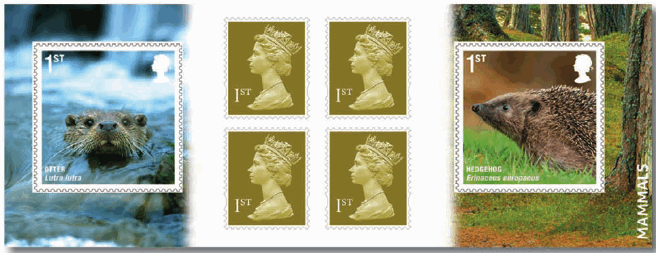
Special
Postmarks
Postmarks available for the day of issue will be shown below here
these may not be to scale. These
postmarks cannot be obtained to order after 13 April.
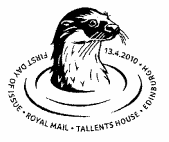
|
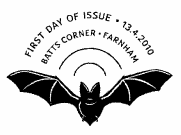
|
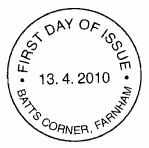
|
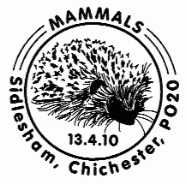
|
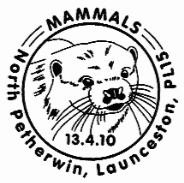
|
| Ref FD1019 Official Philatelic Bureau FDI. |
Ref FD1020 Official Batts Corner FDI postmark. |
Ref FD1020NP Official Batts Corner non-pictorial FDI postmark |
Ref L11692 Sidlesham, Chichester (Hampshire) |
Ref W11703 North Petherwin, Launceston (Cornwall) |
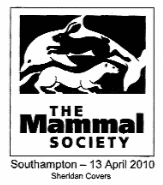
|
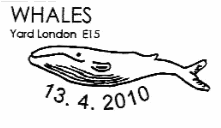
|
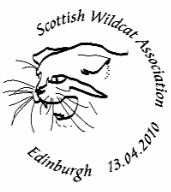 |
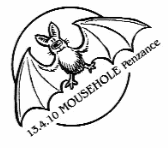
|
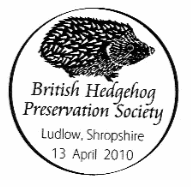
|
| Ref L11693 The Mammal Society, Southampton. |
Ref L11695 Whales Yard, London E 15 |
Ref S11701 Scottish Wildcat Association Edinburgh |
Ref W11704 Mousehole, Penzance (Cornwall) |
Ref W11705 British Hedgehog Preservation Society, Ludlow, Shropshire |
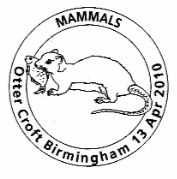 |
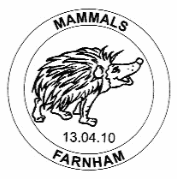 |
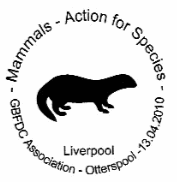 |
||
| Ref
M11698 Otter Croft, Birmingham |
Ref
L11691 Mammals, Farnham |
Ref N11699 Otterspool, Liverpool (GBFDC Assoc) |
If
you would like to be contacted when this page is updated please use the
ChangeDetection panel alongside the stamp
image; any other enquires please email
us.
NB:
emails will usually be acknowledged in 1-2 days. If you do not receive
an acknowledgement please email us from a different address (eg
hotmail, gmail).
This page updated 4 June 2010